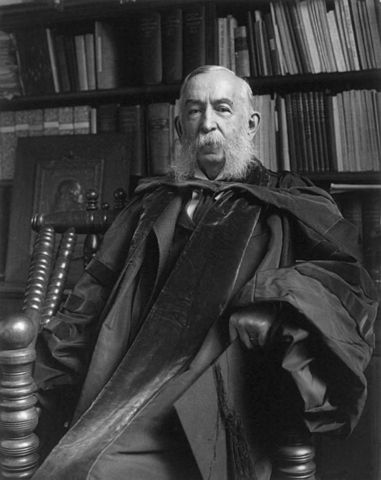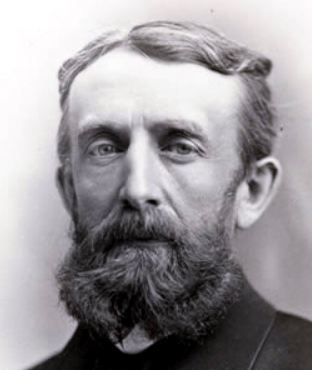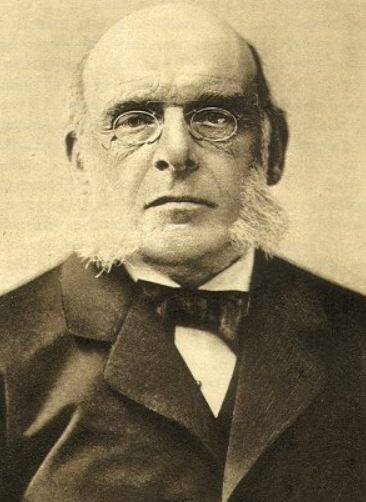Contents
- Introduction
- Preface
- Overview
- Relief Valve
- LECTURE 1: Why We Are In The Dark About Money
- LECTURE 2: The Con
- LECTURE 3: The Vatican-Central to the Origins of Money & Power
- LECTURE 4: London The Corporation Origins of Opium Drug Smuggling
-
LECTURE 5: U.S. Pirates, Boston Brahmins Opium Drug Smugglers
- THE BOSTON BRAHMINS
- Pirates Profiteers Banksters Traders Transfers
- Pirates
- White Slavers, Cargo, Property, Auctions, Amazing Grace
- $ Colonial Labor: Indentured Servants
- England to Philadelphia Slave Trade and Opium
- Extract from Charter of Freedoms and Exemptions to Patroons 1629
- The Definitive Treaty of Peace
- Pennsylvania Charter of Privileges 28 October 1701
- Opium Trade -- American Drug Smuggling Pirates
- Opium In America
- 1% Power Elite Networks
- 1% Elite Networks Bush & The CIA
- BEFORE Skull & Bones
-
SKULL AND BONES
- Academia, Fraternity, Feeder Schools
- Yale and China
- Order of Skull and Bones Chains of Influence
- Tracing the History of Skull and Bones
- Russell Trust
- White Shoe Law Firms
- Kleiner Perkins Caufield & Byers
- Ruth Avery Hyde Paine
- Skull and Bones Secrets
- $uper Rich
- Prescott Bush - Trading With The Enemy Act
- George Bush, Skull & Bones and the New World Order
- Dulles Family and Harvard's Pig Club
- Du Pont Loves Monoplies, Nazis and Trust Funds
- Skull & Bones and the American National Red Cross
- Caribbean Pirates in the American South
- Who Were the Tories
- The Golden Age of Imperialism Opium Act 1908
- Global Dominance Groups
- The New World Order
- Characteristics of Fascism
- War on drugs
- Lecture 5 Objectives and Discussion Questions
- LECTURE 6: The Shady Origins Of The Federal Reserve
- LECTURE 7: How The Rich Protect Their Money
- LECTURE 8: How To Protect Your Money From The 1% Predators
- LECTURE 9: Final Thoughts
SKULL AND BONES INCORPORATES THE RUSSELL TRUST

how wealth and power works
Bonesmen Daniel Coit Gilman ('52), Daniel Gilman, Timothy Dwight ('49) and Andrew Dickinson White ('53)
In 1856, said William Huntington Russell (who had been valedictorian of his class at Yale in 1833) incorporated Skull & Bones as the ‘Russell Trust Association’. It must be recalled here that the opium trading noted above was still being run by the British East India Company (BEIC) – Britain then being the great empire-builder – and that without Britain’s collaboration Russell & Co. would have collapsed. Simply put – the birth of Skull & Bones (whose members are more commonly known as the ‘Bonesmen’) – was paid for by opium drug-smuggling!
Incorporation of the Russell Trust allowed for tax exempt consolidation of power, resources, and even land.
This trust also spun off other organizations that endorse social control for the purpose of consolidating power for the Skull and Bones network. Most significantly, these organizations powerfully influence what you learn in school and notably what you DON'T learn to think critically about how wealth and power works in this country.
The Russell Sage Foundation, which specializes in "social control" programs, was founded by Bonesmen.
Among the leading functions of the Russell Sage Foundation today is the maintaining of a centralized tracking of the finances of all the large tax-exempt foundations in the United States. The Peabody Foundation, the Slater Foundation and several of the Rockefeller foundations were all either started by members of the Order or have been dominated by Bonesmen from their inception. Other major family funds, like the Ford Foundation and the Carnegie Endowment, were wrestled from family control by the Skull & Bones apparatus. During the tenure of McGeorge Bundy, two members of the Ford family resigned from the Ford Foundation in disgust over the direction in which Bundy had taken the philanthropic agency.
Land Grant College Act
 Daniel Coit Gilman ('52), along with two other "Bonesmen," formed a troika which still influences American life today. Soon after their initiation in Skull and Bones, Daniel Gilman, Timothy Dwight ('49) and Andrew Dickinson White ('53) went to study philosophy in Europe at the University of Berlin.
Daniel Coit Gilman ('52), along with two other "Bonesmen," formed a troika which still influences American life today. Soon after their initiation in Skull and Bones, Daniel Gilman, Timothy Dwight ('49) and Andrew Dickinson White ('53) went to study philosophy in Europe at the University of Berlin.
Gilman returned from Europe and incorporated Skull and Bones as Russell Trust, in 1856, with himself as Treasurer and William H. Russell as President.
He spent the next fourteen years in New Haven consolidating the order's power.
Gilman was appointed Librarian at Yale in 1858.
Through shrewd political maneuvering, he acquired funding for Yale's science departments (Sheffield Scientific School) and was able to get the Morrill Land Bill introduced in Congress, passed and finally signed by President Lincoln, after being vetoed by President Buchanan.
This bill, "donating public-lands for State College for agriculture and sciences", is now known as the Land Grant College Act.
Yale was the first school in America to get the federal land scrip and quickly grabbed all of Connecticut's share at the time. Pleased by the acquisitions, Yale made Gilman a Professor of Physical Geography.
Daniel was the first President of the University of California. He also helped found, and was the first president of, John Hopkins.
Gilman was first president of the Carnegie Institution and involved in the founding of the Peabody, Slater and Russell Sage Foundations.

(which received all of New York's share of the Land Grant College Act),
U.S. Minister to Russia, U.S. Ambassador to Berlin and first president of the American Historical Association.
Which is the reason why you wouldn't find out anything about this in your K12 Financial Literacy Curriculum in school.
White was also Chairman of the American delegation to the first Hague Conference in 1899, which established an international judiciary.
(all that german "education philosophy" which is actually just "training" the masses to serve the elite)
TRAINED TO SERVE THE STATE
The Daniel / Gilman/White trio was also responsible for the founding of the American Economic Association, the American Chemical Society and the American Psychological Association. Through their influences on Thomas Dewey and Horace Mann, this trio continues to have an enormous impact on education today.

Timothy Dwight, a professor at Yale Divinity School, was installed as president of Yale in 1886. All presidents since, have been either "Bonesmen" or directly tied to the Order and its interests.